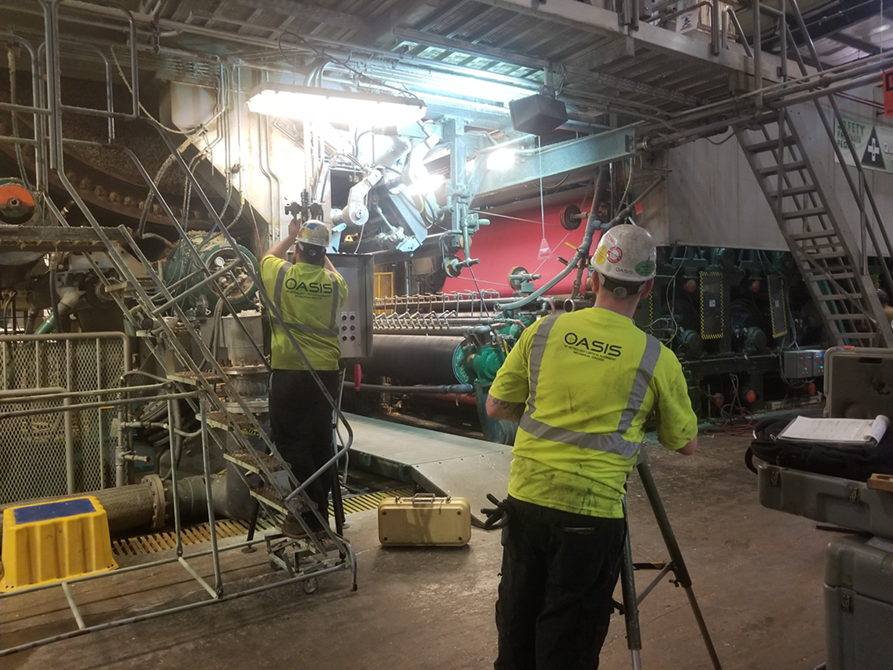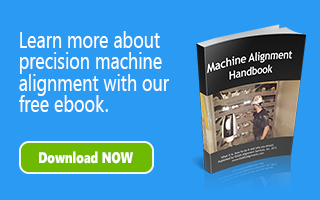In our recently published “The Importance of Precision Alignment During Paper Machine Upgrades & Conversions – Part One”, we discuss the reasons why machine alignment is an important part of any paper machine upgrade or conversion project and why alignment should always be included as part of the project plan. Here in part two of our series, we provide an overview of how alignment effects each section of a paper machine – from the forming section through the winders. Stay tuned for part three of this series, where you will learn the common process and production issues related to misaligned components within your paper machine, as well as the alignment techniques and technologies that help you avoid these costly issues.
How Alignment Effects Each Section of Your Paper Machine
Formers
In general, formers are designed to do just that – form a sheet and remove a significant portion of water from the sheet. Regardless of machine configuration, Fourdrinier design and/or some type of twin wire former, alignment is extremely important.
Forming zones
Manufacturer design specifications including alignment of components and designed geometry, are required for optimal performance of any machine. Impingement angles, position of forming board/blades and associated rolls will have a direct effect on quality of product and formation of sheet.
Wire Runs
It is just as important for all rolls within a wire section to be properly aligned. Misalignment can and will, cause wire tracking problems as well as skew in wire trade seam. When the trade seam is skewed, water will not drain through the wire as intended. Even when all table or foil blades are properly aligned, water will not be removed as it should if the wire is skewed. Wire skew restricts the openings in the wire, thus restricting the flow of water.
Press Sections
The press section removes even more water from the sheet through a process of passing the sheet between machine components (rolls and/or roll and shoe) that apply pressure and thereby transfer water from the sheet into the fabric/felt.
Press Components
Press rolls should be aligned parallel within 0.005” over the length of the roll surface. Shoe press components should be aligned parallel and to manufacture specifications of shoe centerline location relative to roll centerline. Misalignment between press rolls/components will create an uneven nip (more pressure will be applied to one side vs the other). Uneven nip will not allow for even water removal across the width of the sheet and render the press inefficient. Furthermore, uneven nips can cause premature wear of press fabrics.
Felt Runs
Press sections will have at least one felt run which runs across the lower/fixed roll, down thru the basement, over and around rolls to make a continuous loop. The press felt will travel across suction boxes which vacuum water out of the felt. As it passes thru the press again, water will be transferred from the sheet to the felt (continuous cycle). All rolls within a felt run should be aligned level and square to machine baseline or in worst case scenarios, all rolls within a felt run should be aligned in a similar level and square condition. This will allow the felt to track properly and keep the trade seam aligned. Trade seam skew in a felt is comparable to skew in a forming zone wire. Skew will not allow water to flow into and out of the felt as designed.
Dryer Sections
Much as the name implies, the sheet is dried to production standards in the dryer sections. Dryer sections come in various forms depending on the process and type of sheet manufactured:
- Dryer sections consisting of up to 100+ dryer cans which are steam vessels, heated to between 300 and 400 degrees F. The sheet passes over the dryer, and heat transfers into the sheet evaporating water from within the sheet.
- TAD (Thru Air Dryers) where air is forced thru the sheet as it passes over the dryer, and Yankee dryers which are large in diameter, thereby allowing the sheet to remain on one ‘dryer can’ for a longer period of time but yielding similar results as smaller dryer cans (heat transfer into the sheet, evaporating water from the sheet).
- Air dryers for pulp machines where the sheet is supported and carried thru the oven and removing water from the thick layer of pulp.
In each type of drying section, alignment of the components is critical to optimizing drying performance. Misalignment within these components can lead to improper felt tracking, sheet breaks, wrinkles, and machine downtime. Additionally, the moving parts that drive the dryer sections – gear casings, gearboxes and drive motors – should be aligned for optimal drive efficiency and lifespan of the parts including the couplings and bearings. As everyone knows, energy generation can be expensive and dryer sections utilize a great deal of energy. When dryer section components are aligned and running at optimum efficiency, energy costs stay manageable.
Breaker Stacks, Size Press & Calenders
All utilize a process whereby the sheet is passed thru nipped rolls. Nipped rolls should always be aligned parallel or uneven nips will occur. Uneven nips render the process inefficient and lead to uneven/increased wear of components/rolls.
Reels
Reel drum, primary arm, and rail alignment are critical to proper turn-ups and properly wound roll sets. Wear in primary arm gears will lead to improper timing of arms which in turn leads to poor turn-ups or even sheet breaks at the reel. Learn more about reel alignment in our two-part series “Paper Machine Reel Alignment Can Help You Avoid Real Issues”.
Winders
Winders run at very high rates of speed. The faster the machine speed, the tighter the tolerances are. Winders are very unforgiving when it comes to alignment. The overall sheet path, from unwind to bed rolls, is critical for optimal performance. Proper alignment of slitter sections, bowed rolls, winder drums, rider roll and ways, are all important to winding basics – TNT (Torque, Nip & Tension). TNT in some respects, is controlled by drive, hydraulic and control systems. However, if components are misaligned, operators will have a very difficult time maintaining the TNT specifications of the winder. For an in-depth discussion on winder alignment, read our four-part series “Precision Alignment of Winders”.
Be sure to check back for part three of this series on the importance of precision alignment during paper machine upgrades and conversions and learn the common process and product issues related to misaligned paper machine components and the alignment techniques and technologies that can help avoid these issues. If you are planning a paper machine upgrade or conversion and would to discuss how best to include precision alignment as part of your plan, contact OASIS today – an OASIS representative would be happy to assist you.

